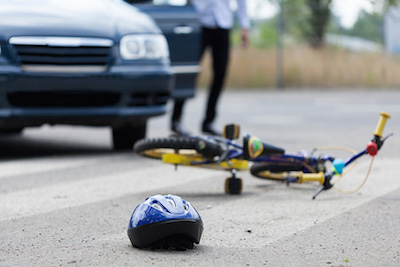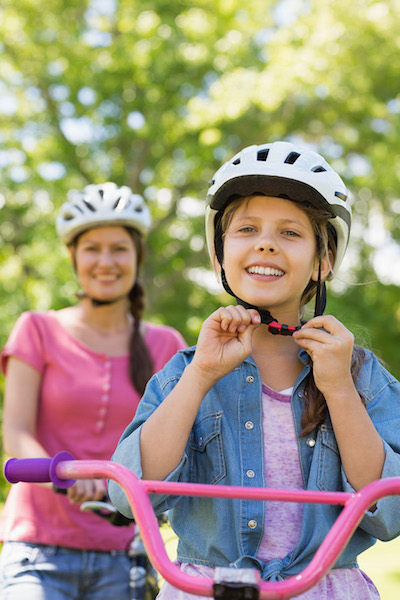Bicycle Helmets Will Keep Your Children Safe This Summer
One of my favorite things about the neighborhood in which I live is that on any given day, you might see a gaggle of children riding their bikes or scooters down the street accompanied by lots of laughter and silliness. It reminds me that mine is a family neighborhood, and I’m so fortunate to live in a place where kids have the opportunity to play outside and enjoy all of the freedom that summer brings.
What I notice on occasion, though, are children who aren’t taking all of the necessary safety precautions. Yesterday, as I pushed my children along the sidewalk in a stroller, I passed a teenager with a helmet balanced atop her head without the straps buckled. I wanted to ask her exactly how she thought that helmet might help her if she fell, but I didn’t. It did, however, remind me that it’s my responsibility to ensure that my children learn how to ride a bicycle safely before I set them free to do it on their own.

Why are bike helmets necessary?
An estimated 33 million children ride bicycles in the U.S. each year - that’s about 10 billion hours of bike-riding. Bicycle accidents account for 150,000 emergency room visits for children and cause 400 child deaths each year. Helmets have been proven to reduce bicycle-related head injuries by as much as 80 percent. However, only about 15 percent of children wear helmets all or most of the time.
Bottom line: when your child gets on a bicycle, there is a small, but very serious, risk for injury. If an accident does occur, a helmet serves to protect the most vulnerable part of them: their brain.
What are the important things to know about bike helmets?
Be sure to buy a helmet that is specifically made for bicycling. Bicycle helmets are designed to ensure proper padding for falls likely to occur head first and at high rates of speed. Other types of helmets may not offer enough protection. Check the label inside the helmet to be sure it’s approved for bicycle-riding by the Consumer Product Safety Commission. Know the three easy-to-remember steps to ensure a proper fit:
- EYES - The helmet should sit level on top of the head. There should only be two-fingers width between the top of the eyes and the helmet. Don’t allow the helmet to fall backwards on the head.
- EARS - The straps should lie flat against the head and form a “Y” directly underneath the ear. Be sure straps aren’t twisted.
- MOUTH - When straps are buckled, the child should be able to open and close their mouth comfortably. However, the straps should fit snugly - enough to allow only one finger in between chin and strap.
Check out this short video to see how to fit your child’s helmet properly.

How do you get your kids to wear helmets?
Children should wear helmets each and every time they ride their bikes. Injuries can occur anywhere - even in your own driveway. Buying the proper gear is often the easy part. Getting kids to actually wear the helmet can be quite a challenge. Here are a couple of tips that might help:
- Start early. Begin placing a helmet on your child as soon as they ride tricycles or ride on the back of an adult bike. This begins a lifetime habit of healthy behaviors that they’ll carry into adulthood.
- Allow the child to buckle their own chin strap. If your child has been pinched by the strap a few times, they won’t be a big fan of the helmet.
- Set a good example. Wear a helmet yourself.
- Explain why helmets are necessary. Let them know that if they fall off their bike, they could permanently hurt their brain. We want to protect their heads, and a helmet is the best way to do that.
- Create a strict rule: no helmet, no bike. Be consistent about requiring them to wear the helmet each and every time they use their bike. If the rules never change, they’ll accept the helmet as part of the bike-riding experience.
Are You Interested in Learning More?
Sign up for our e-newsletter for more tips and best practices from pediatricians.
Sign Up Here










